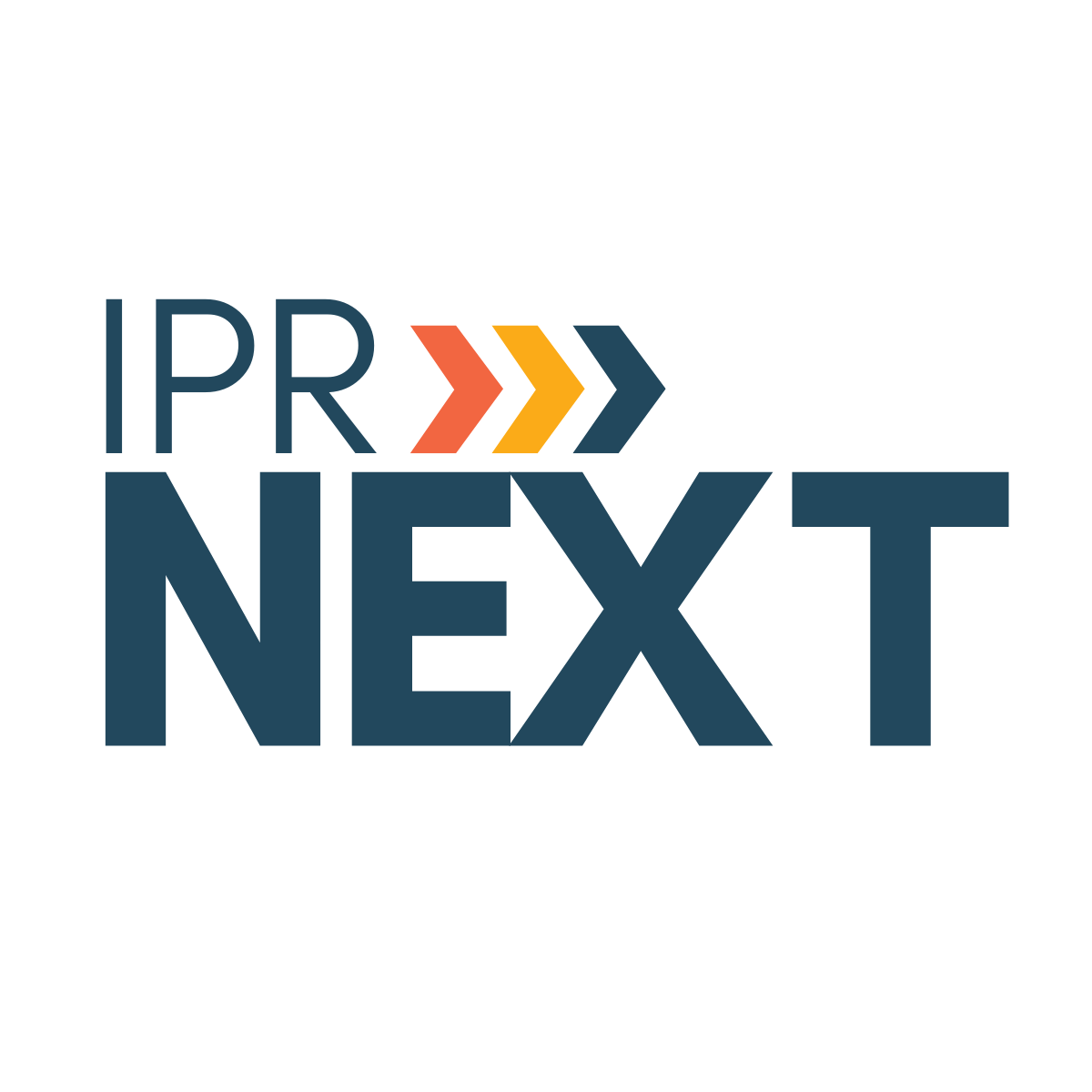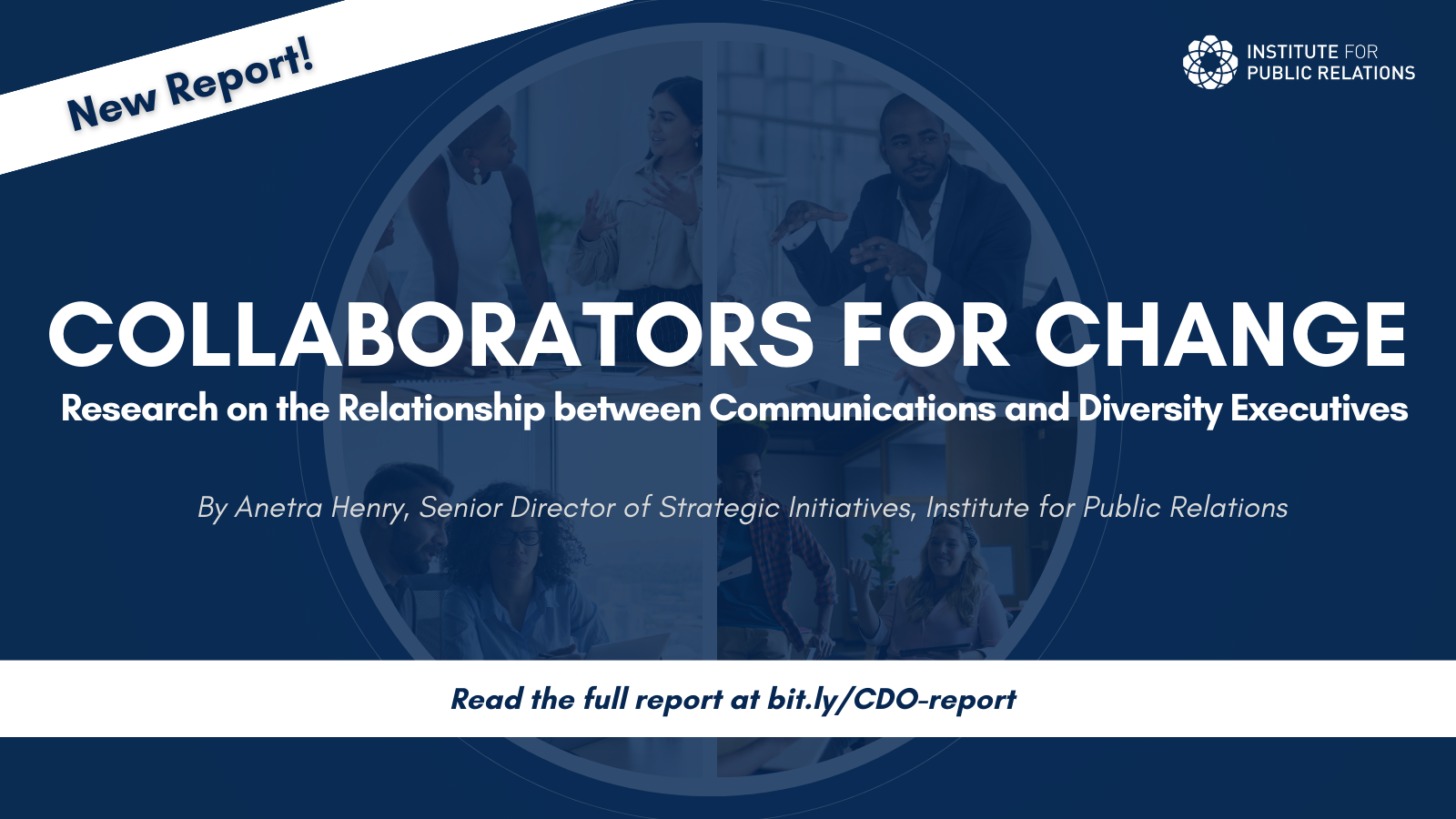Download Full Report (PDF): COVID-19: How Businesses Are Handling the Crisis
Download Press Release (PDF): COVID-19 Report – Communications – Press Release
Download Business Release (PDF): COVID-19 Report – Business – Press Release
Download Topline Findings: Topline Findings: COVID-19 Report
This is an IPR Signature Study. Presented by the Institute for Public Relations and Peppercomm.

NEW YORK, NY – More than three-quarters of communication executives (81%) said the communication function has been “important” or “very important” to their company’s COVID-19 response, according to a new study by the Institute for Public Relations and Peppercomm.

In the study, “COVID-19: How Businesses Are Handling the Crisis,” 300 communication executives and senior leaders were surveyed to find out how their companies were faring in the COVID-19 pandemic, including what sources they trust, how prepared they are for the crisis, and what their businesses are doing to fight against the disease and resulting panic.
Steve Cody, CEO & founder of Peppercomm, said, “There is a pressing need to understand how our country’s top private-sector communicators are coping with this unprecedented calamity. It’s essential that we share these findings and best practices with others who may be struggling with determining the best way to respond.”
More than half (53%) of communication executives said COVID-19 has had a “moderate” or “major” impact on their business operations and expect it to get worse. Meanwhile, 83% are moderately or extremely concerned about the potential impact.
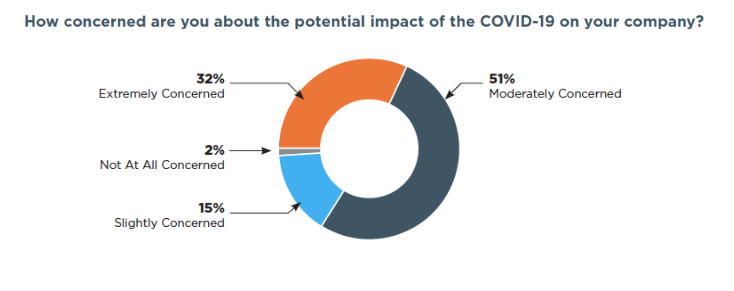
Rob Clark, Chief Communications Officer at Medtronic, was not surprised by these results. “People in our function are being heavily relied on in a time like this,” said Clark. “We are the tip of the spear on this issue and rightfully so.”
What Communication Leaders and Companies Are Doing
While three-quarters (75%) of respondents said their communication function was “very involved” in communicating internally, this drops to 58% of respondents saying their communication function was “very involved” in communicating externally.
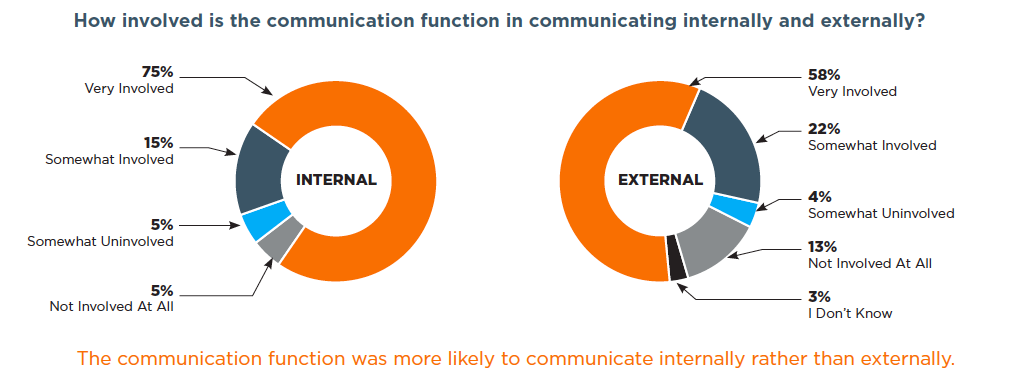
When communicating information about COVID-19, 81% of respondents said employees were a “high” or “essential” priority. Businesses are employing a variety of tools to communicate with their employees, including internal platforms, mobile apps, and hotlines. They have also made efforts to increase sanitation practices, including increasing sanitation stations, safety guidelines, and even some using thermal/temperature scanning to detect illness.

“All of our employees have access to Medtronic’s intranet and the banner right now is our COVID-19 hub,” said Clark. “It provides all the information needed on travel, health, and anything that will help. You can access this from your mobile as well. Nearly half of our company has made use of it making it the most trafficked digital resource we’ve ever had.”
Clark was not surprised that this has been such a valuable resource and feels it is intrinsic to his company’s mission.
“This has a personal impact on everyone,” said Clark. “People aren’t sure what to think and what it means for them personally or for their families. So, they’re looking for any guidance on what to do. We as the employer should be providing that.”
And the help doesn’t stop there. Companies are stepping up to do their part. More than half (53%) of the respondents said their companies are helping or plan to help those affected by the COVID-19 crisis.
Crisis Preparedness
The majority of respondents (85%) felt their organizations are at least “somewhat” prepared for the COVID-19 crisis and 87% said the same about their communication functions. However, there was varied sentiment about how well companies are updating their crisis plans varies.

More than half (55%) said they have made good progress on updating their crisis plans or have them fully updated. Nearly one-quarter either had not made progress on updates, had not planned to update, or had no crisis plan at all. More specifically, while 56% had an infectious disease outbreak in their crisis plan, 44% did not.
If the communication team is part of the cross-functional team, three functions were identified by more than half of the participants to be on the team with them: Human Resources (77%); Operations (67%); and Legal (52%). 3% of respondents said the communication function was not part of a cross-functional team, and 6% said their company did not have one.

Nearly half (49%) of communication executives said the CEO should be the primary communicator, even though a few noted this may be contextual. After the CEO, significantly fewer respondents noted other
C-suite executives should be primarily responsible for communicating: CCO (12%), CHRO (10%), and COO (8%).
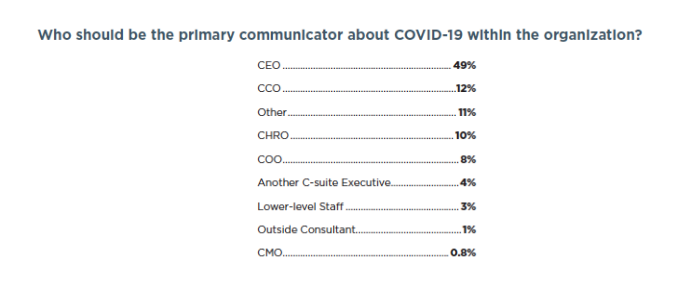
Trust in Sources
Health-related agencies were reported to be the most trusted sources of information during the COVID-19 crisis. Nearly three-quarters of respondents (71%) have “a lot” of trust in federal agencies, such as the Centers for Disease Control and Prevention or National Health Service, and international health organizations, such as the World Health Organization.
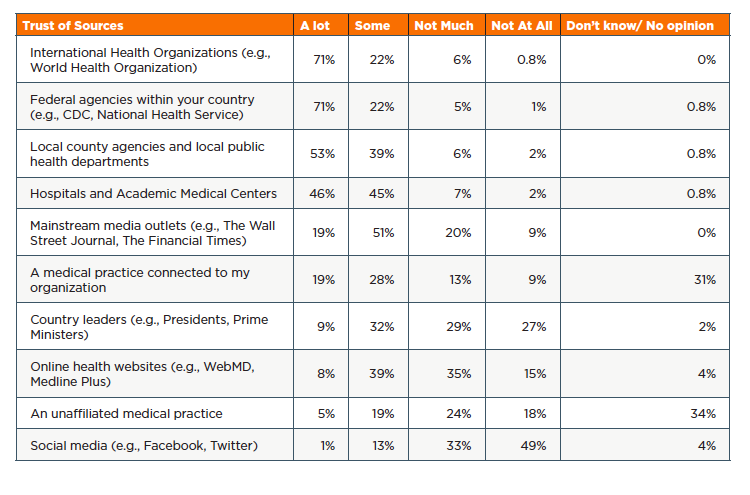
On the other hand, social media, online health websites (e.g., WebMD), and country leaders (e.g., presidents and prime ministers) were the least trusted sources of information. For example, 82% of respondents said they had “not much” or no trust in social media. Fifty-six percent reported having “not much” or no trust in country leaders. Only 5% of respondents directed stakeholders to seek additional information from country leaders, while only 2% suggested social media.
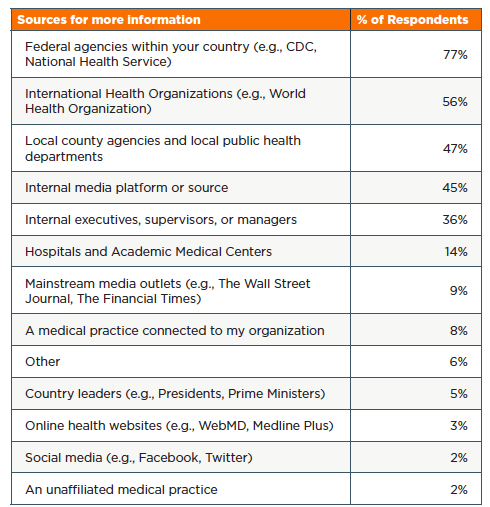
“Communicators significantly influence the decisions that organizations make as they serve as connectors among functions and stakeholders,” said Tina McCorkindale, Ph.D., APR, President and CEO of the Institute for Public Relations. “When they turn to trusted sources to help inform their stakeholders and curb disinformation, this has a significant impact not just on the business but society at large as well.”
For the complete report and the report’s demographics, please visit: https://instituteforpr.org/coronavirus-covid-19-comms-report/

Register Here!
###
Methodology: The Institute for Public Relations conducted an online survey of 300 communication executives and senior leaders from March 5 -10, 2020 to find out how their company and their communication function are responding to the coronavirus. The margin of error based on the sample size is +/- 6%, but please note this was not a random sample.
To give context to the survey, as of March 11, more than 120,000 people have been infected with COVID-19 around the world with more than 4,600 deaths. On March 11, the World Health Organization updated the classification of COVID-19 from an epidemic to a pandemic.
About The Institute for Public Relations
Founded in 1956, the Institute for Public Relations is an independent, nonprofit foundation dedicated to the science beneath the art of public relations™. IPR creates, curates, and promotes research and initiatives that empower professionals with actionable insights and intelligence they can put to immediate use. IPR predicts and analyzes global factors transforming the profession, and amplifies and engages the professional globally through thought leadership and programming. All research is available free at www.instituteforpr.org and provides the basis for IPR’s professional conferences and events.
About Peppercomm
Peppercomm is an award-winning strategic, integrated communications and marketing agency headquartered in New York City with offices in San Francisco and London. The firm combines 25 award-winning years of expertise serving blue-chip and breakout clients with forward-thinking new service offerings and the freshness of a start-up. This unique mix of experience and energy enables the firm to attract and empower teams with a creative edge, drive and passion for promoting, protecting and connecting clients in a fast-changing marketplace. Founded in 1995, Peppercomm has received numerous accolades, including The Holmes Report’s North American Corporate/B2B Agency of the Year and Bulldog Reporter’s Midsized Agency of the Year. The agency has been listed as one of Fortune’s 10 Best Workplaces in Advertising and Marketing, 100 Best Workplaces for Women, 50 Best Small and Medium Workplaces and 50 Best Workplaces for New College Grads. For more information, visit www.peppercomm.com or follow us @Peppercomm.
Media Contacts:
Paul Merchan
Peppercomm
pmerchan@peppercomm.com
212-931-6172
Nikki Kesaris
Communications Manager
Institute for Public Relations
nikki@instituteforpr.org
352-392-0280
